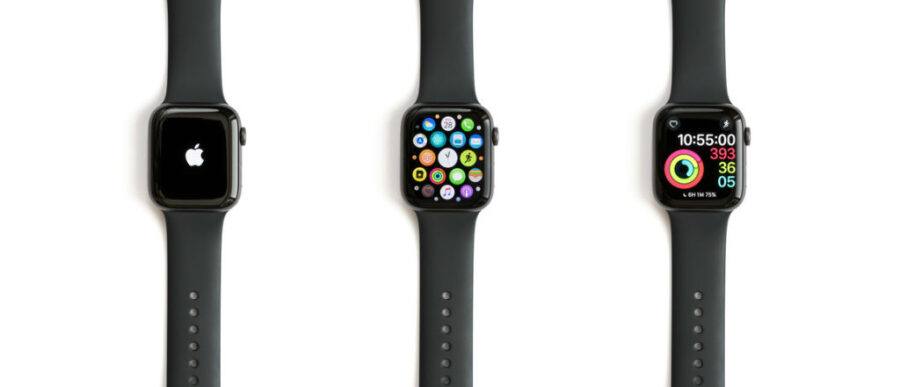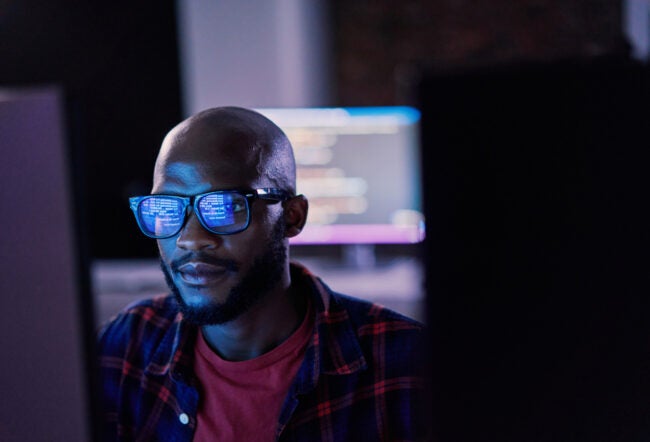A personal experience with the tedium and bureaucracy of health care stands as a metaphor for John Whang, who is leading a new research study by Johnson & Johnson into early detection of a potentially deadly heart condition known as atrial fibrillation.
Whang, a physician, described taking his daughter for a routine eye exam to check her visual acuity. They got in the car, drove to the doctor’s office and waited 40 minutes to see the doctor, who needed maybe 10 minutes to conduct the exam. Then they drove home.
“Soup to nuts, it was two hours,” he said. “Now maybe this is too futuristic, but could you just put the phone up [to your face] and have the eyes checked that way for visual acuity?”
While it may take years before smartphones can be used to diagnose vision problems with a touch of the screen, the idea of applying technology to make medical care more efficient for physicians and less burdensome for patients is at the core of a new study called HEARTLINE.
Janssen Pharmaceuticals Inc., a Johnson & Johnson company, is partnering with tech giant Apple for the multiyear study to determine whether the Apple Watch can help with earlier detection of AFib and improved outcomes for the 33 million people worldwide who are living with the condition.
AFib is an irregular heartbeat that can lead to the formation of blood clots resulting in stroke, heart failure and other potentially devastating complications. According to the Centers for Disease Control and Prevention, AFib is responsible for about 130,000 deaths and 750,000 hospitalizations every year in the United States. The condition is especially dangerous for those over 65, which is the minimum age for HEARTLINE participants. The study will aim to enroll up to 150,000 Americans.
Whang is head of cardiovascular and metabolism integrated evidence at Johnson & Johnson and one of the architects of the study. He recently spoke about it during the Knowledge at Wharton radio show on SiriusXM. (Listen to the podcast at the top of this page.) Whang was on campus to participate in the annual Wharton Customer Analytics Conference.
The elements of the study are straightforward: Analyze the data collected through an app developed by Johnson & Johnson and downloaded to the Apple Watch Series 4, which is capable of tracking the heart’s electrical activity.
“The idea is to leverage the intersection of where the technology is currently with wearables — the Apple Series 4 Watch seems to be on the leading edge of that — with this big public health problem of the increased incidence of AFib because the population is aging,” Whang said. “If you could put the technology together with where the demographics are headed, we could probably have a public health impact. For J&J, that is a big deal because that is our mission statement, which is to change the trajectory of human health.”
HEARTLINE builds on previous studies conducted by Apple with Stanford Medicine and by Johnson & Johnson. But it’s the first time the two companies have partnered, and Whang thinks the collaboration is significant because of what each brings to the table. Johnson & Johnson isn’t a tech company, and Apple isn’t a medical device manufacturer. But together, they can build something “really meaningful,” he said.
“We didn’t want to do a 1,000-patient study. We didn’t want to do something that was just going to be a little blip.”
“We didn’t want to do a 1,000-patient study. We didn’t want to do something that was just going to be a little blip. We said we’re going to commit and try to do something that is going to change the way we think, the way we operate as a company within the particular functions that are involved in this project that we are lifting off with Apple,” Whang said. “Because that is really where the change actually happens, in the way that people operate, the way they think, the way they work together.”
In a previous study that focused on participants wearing a patch that monitored heart rhythm, Johnson & Johnson found that the participants were more likely to visit their cardiologists instead of waiting to go to the emergency room when troubling symptoms took hold. Whang said that result shows promise for the HEARTLINE study in terms of getting patients to use wearables to become more proactive about their health.
Reordering the Value Chain
Moving the site of care from the ER to the doctor’s office and investing upfront in wearable technology changes how patients flow through the health care system. The financial benefits for Johnson & Johnson and Apple come when there is a reordering in the value chain and the companies position themselves to get ahead of that.
“As a manufacturer, we need to understand what that value chain will look like in the future, where the puck is going to be, as wearables penetrate the market more,” Whang said. “That is a really key, important learning because then we know where to insert ourselves to provide value to the system.”
The goal of the study is twofold. The first is to diagnose AFib earlier in order to improve outcomes, and the second focuses on medication adherence. If the smartwatch nudges patients to take their medications, will they comply so better health outcomes are achieved? That is essential because it’s not enough to have data and devices. There also must be “delivery” of health care, Whang said.
“As a manufacturer, we need to understand what that value chain will look like in the future, where the puck is going to be, as wearables penetrate the market more.”
“If [the devices] sit outside of it, it is not going to effect change, it is not going to affect outcomes, it is not going to affect really anything. So, how do you put those three things together: data, devices and delivery? That is going to be the secret,” he said.
Whang believes the HEARTLINE study shows the enormous potential that wearables have for health care. Everything from mood to sleep patterns to facial recognition can be monitored by technology, and the data captured and analyzed for better health. Whang envisions a not-so-distant future where a patient can prick a finger, send a droplet of blood to a device attached to a smartphone and get instant feedback on a tumor or viral infection.
“We are going to come away learning tremendous amounts about how to do things,” he said. “With these algorithms now working in conjunction with devices and the data that they produce, where are we going to go next with better interventions, because we have actually diagnosed it earlier and we have picked up the signal? It can go all sorts of ways.”



